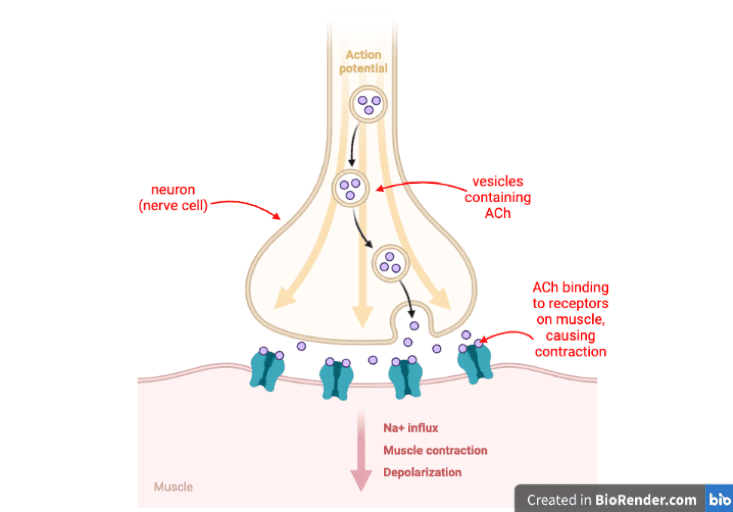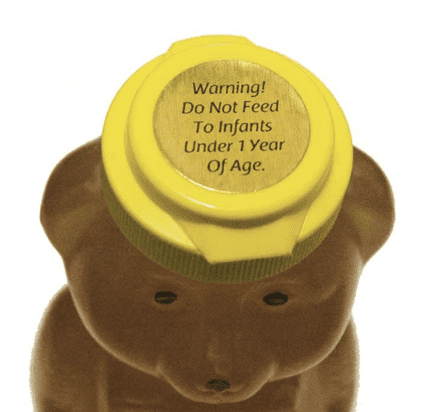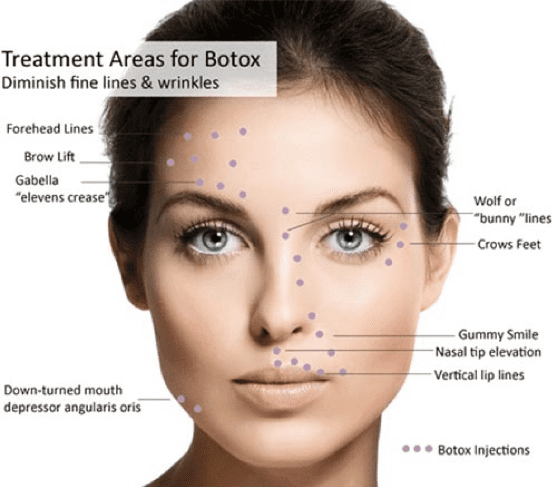Every year, millions of Botox® procedures are done, usually in the form of non-invasive injections. In many cases, these injections are used for cosmetic purposes, such as eliminating wrinkles from the skin. Several therapeutic uses are common as well, such as treating migraines and even excessive sweating (hyperhidrosis). Obviously, if so many people do it and it has so many benefits, Botox® must be harmless, right? Well, the procedures themselves are considered to be quite safe; however, there is a dark, deadly secret hiding in each injection.
What is Botulinum toxin?
To understand what botulinum toxin (BoNT; also known as the toxin behind Botox®) is, you first must get acquainted with the culprit responsible for its production: a microorganism. Specifically, botulinum toxin is produced by Clostridium botulinum, a type of bacterium. This is a gram-positive, spore-forming, anaerobic bacterium that can be found practically anywhere in the world, living in soil as spores.
C. botulinum itself is not particularly harmful. The toxin it produces, however, is considered the deadliest natural substance on the planet. This toxin is the key player in a devastating disease known as botulism, which is fortunately not very common these days.
Botulism Disease
You may have heard of botulism before, as it is a type of poisoning resulting from improper food preservation/canning. It is also the reason why honey is labeled with a warning claiming that children under a year old cannot consume it. Today, there are three main methods of infection with C. botulinum: intestinal, foodborne, and through infected wounds.
Botulism is extremely frightening because of one attributed symptom: paralysis. Similar to its closely related cousin, Clostridium tetani, the causative agent of tetanus disease (which also causes paralysis), C. botulinum kills its victims in a drastic and efficient way. Most affected individuals that succumb to the illness die as a result of respiratory failure, as the muscles required to inhale become paralyzed. But how, exactly, does this happen?
In order for muscles to contract, they must receive a chemical signal from a nearby neuron, a cell that is part of the nervous system. This chemical signal comes in the form of a neurotransmitter called acetylcholine (ACh). ACh leaves neurons in a small, membranous pouch known as a vesicle. This vesicle is destined to make a short journey over to a muscle cell, where it opens and ACh is free to bind to receptors that trigger contraction. When botulinum toxin enters the body, it quickly attacks nerve cells. Specifically, it makes it impossible for vesicles containing ACh to form, ultimately making muscle contraction an impossible task. The result is descending, flaccid paralysis. This means the paralysis begins with the face/neck muscles and works its way down, and is characterized by drooping, unmovable muscles.

Today, though it is very uncommon, the disease does have an effective treatment. Because symptoms are caused by a toxin rather than an actively-dividing bacterium, antibiotics are usually not used for treatment (although they may be necessary in cases of wound botulism, in which a wound is colonized by bacteria). Instead, the treatment of choice is an antitoxin that neutralizes botulinum toxin that is actively circulating the bloodstream, still unbound. The effects of botulism are technically irreversible, but this does not mean an affected individual remains paralyzed forever. Gradually, nerves will heal from the effects of the toxin, but this is a very slow process that may take several months. Over those months, depending on how far the disease progresses, affected people most likely will need supportive therapy.
History of Botulism
The origins of the disease can be traced back to the mid 1730s when it began to be associated with the consumption of blood sausage. In fact, the name “botulism” comes from the Latin word for sausage: “bottelus.” At this time, people were not aware of the consequences of improper canning techniques or food preparation, so foodborne botulism ran rampant throughout the population.
The most recent outbreak of the disease that gained attention occurred in 2015 in Ohio at a church potluck. This outbreak, the largest in nearly 40 years, affected 29 people and resulted in one death. The culprit was improperly prepared potato salad, which served as a powerful reminder of how dangerous C. botulinum can really be.
Today, the vast majority of botulism cases are intestinal rather than foodborne. These cases are often the result of children under a year old consuming honey, which is abundant in C. botulinum spores. For this reason, intestinal botulism is also commonly known as infant botulism. Older individuals can usually eat honey without any problem, as the bacteria living in our digestive systems out-compete C. botulinum spores, which never germinate. However, since the infantile digestive system is underdeveloped, it is much easier for C. botulinum to colonize the intestines and cause disease.

What does this have to do with Botox?
Though it only takes a minuscule amount of botulinum toxin to kill a person, thousands of people get Botox® injections, which contain BoNT, annually. When used for cosmetic or therapeutic purposes, the toxin is very highly regulated through sterilization/dilution and delivered in extremely small doses. Because the toxin works by preventing nerve signals (neurotransmitters) from reaching muscles, Botox® is used to treat problems having to do with muscle contraction. This is especially helpful for people with chronic muscle pain, as it forces these muscles to relax.
Most commonly, Botox® is associated with cosmetics and the elimination of wrinkles. It works very well for dynamic wrinkles, which are caused by muscle movement, like smile lines and wrinkles in the forehead. However, the injections do not accomplish nearly as much when it comes to static wrinkles, or simply sagging skin that usually comes with age. Because the injected toxin paralyzes muscles at the injection site, like in the forehead, for example, the wrinkles associated with movement in that area will no longer appear. The effects of Botox® last a few months, but because the nerves eventually heal (as with botulism disease), injections have to be continuous for the desired result to last.

A concern that frequently comes up in the discussion about Botox® is if anyone has ever come down with botulism disease from receiving an injection. The answer is quite unclear, as marketing companies often claim that the procedure is harmless 100% of the time, save for soreness at the injection site. On the other hand, in a study done in 2018, 86 cases of botulism were identified and were attributed to Botox® injections. The observed patients presented with early symptoms of botulism disease and responded well to treatment with the BoNT antitoxin. None of the patients developed any serious complications or respiratory problems, but they were also promptly treated with the antitoxin.
The overwhelming majority of Botox® injections are indeed very safe, and cases of botulism are extremely rare in today’s time (<1,000 cases worldwide). It is important to note, however, that C. botulinum is currently considered a major bioterrorism threat because of its toxin’s deadly nature. At the very least, concern about contracting the disease from a cosmetic procedure is minimal.
The post What’s the Difference Between a Harmless Cosmetic Procedure and the Deadliest Poison on Earth? There Isn’t Any! appeared first on Illinois Science Council.








Leave a Comment